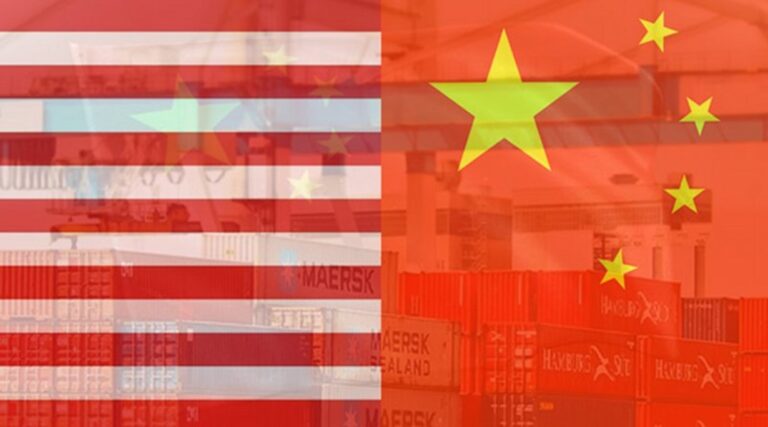🎧 Listen to This Article
China’s Tariff Ultimatum to the U.S. Marks a Critical Crossroads for Global Trade and Tax Policy
The escalating tariff battle between the United States and China is now more than a trade skirmish — it’s a referendum on the future of global economic cooperation. With China urging the U.S. to “completely cancel” its reciprocal tariffs, and the Trump administration signaling only partial concessions, we are entering a stage where short-term political maneuvering threatens to do long-term damage to international commerce, fiscal stability, and strategic tax planning.
This is not just about percentages or exemptions — this is about principle, precedence, and power. And businesses, tax policymakers, and financial strategists across the globe must take note.
The Spiral of Escalation
Since early April, the United States has increased tariffs on Chinese imports from 54% to a staggering 145%, in a move the White House argues is designed to reclaim fairness in trade and manufacturing. China, predictably, has responded with its own retaliatory increases, now reaching 125% on American goods.
While Trump recently offered exemptions on select tech products — smartphones, semiconductors, and computers — it was a tactical retreat, not a strategic shift. Beijing called it a “small step,” making it clear that the real demand remains: a total rollback of the reciprocal tariff regime.
The Trump administration’s tariffs may appear to be a tactical tool for negotiation, but they have become a blunt instrument — one that is triggering cascading consequences across global supply chains, taxation frameworks, and economic alliances.
Global Implications: Tax Strategy Meets Trade Warfare
Tariffs, at their core, function as fiscal policy instruments. But when weaponized for political objectives, they distort market behavior and undermine tax certainty — a foundational principle of international investment.
- Supply Chain Realignments: Major multinationals are already exploring “friend-shoring” or “near-shoring” to avoid punitive levies. These restructurings carry immense tax consequences, from permanent establishment risks to changes in transfer pricing arrangements.
- Double Tax Exposure: Increased tariff costs, especially if not mitigated by trade agreements or bilateral negotiations, can be passed down to end consumers or absorbed by corporations. Both scenarios pressure tax planning structures, increasing the likelihood of audits and disputes over cost allocations and deductible expenses.
- Trade-Tax Conflict Zones: Countries with dual tax and customs jurisdictions (like the EU) are now caught in the ripple effects, having to recalibrate treaties, origin rules, and VAT systems to handle U.S.-China rerouting maneuvers.
A Dangerous Precedent: Normalizing Tariff-First Diplomacy
If the U.S. continues down this path — making tariffs a go-to economic tool — it could normalize protectionism under the guise of reciprocal fairness. This runs counter to decades of progress under the WTO framework, and signals to other nations that retaliatory economic policy is an acceptable norm.
Historical Reference: The 1930 Smoot-Hawley Tariff Act — widely blamed for deepening the Great Depression — looms large. Today’s cycle of retribution has echoes of that same mistake: escalating without clear off-ramps or multilateral coordination.
What Needs to Happen Next
For Policymakers:
- Immediate Bilateral Talks: A G20-facilitated dialogue could reset expectations and allow for third-party arbitration.
- WTO Engagement: Both countries must re-engage with global institutions to enforce trade discipline and restore balance.
- Tariff Sunset Provisions: Any future levies should include automatic review clauses to prevent indefinite economic drag.
For Multinational Corporations:
- Revisit Supply Chains: Map out alternative sourcing that avoids key tariff corridors, but also consider tax jurisdiction impacts.
- Tax Compliance Reviews: Heighten focus on transfer pricing documentation and customs valuation to withstand scrutiny in this volatile environment.
- Scenario Planning: Build out multiple global tax strategy models that can absorb either further escalation or a phased de-escalation.
The Real Cost of a “Tariff Forever” World
If the U.S. refuses to budge, China’s threat to “fight to the end” isn’t mere rhetoric. A long-term tariff regime would fracture existing trade norms, encourage further economic nationalism, and disrupt the tax certainty that investors and corporations rely on.
This moment requires leadership, not leverage. Tariffs might be popular in election cycles, but they are corrosive over time. We’ve reached a point where policy must pivot from punishment to pragmatism.
The tax world cannot afford a trade war masquerading as reform.
For further details, clarification, contributions, or any concerns regarding this article, please contact us at editorial@tax.news. We value your feedback and are committed to providing accurate and timely information. Please note that our privacy policy will handle all inquiries



